What life is like in Olympic Village for Australian athletes
The Australian section of the Paris Olympic Village has been made to feel like home for our athletes, with Taco Tuesday, free soft drinks and a coffee cart just a few of the things on offer
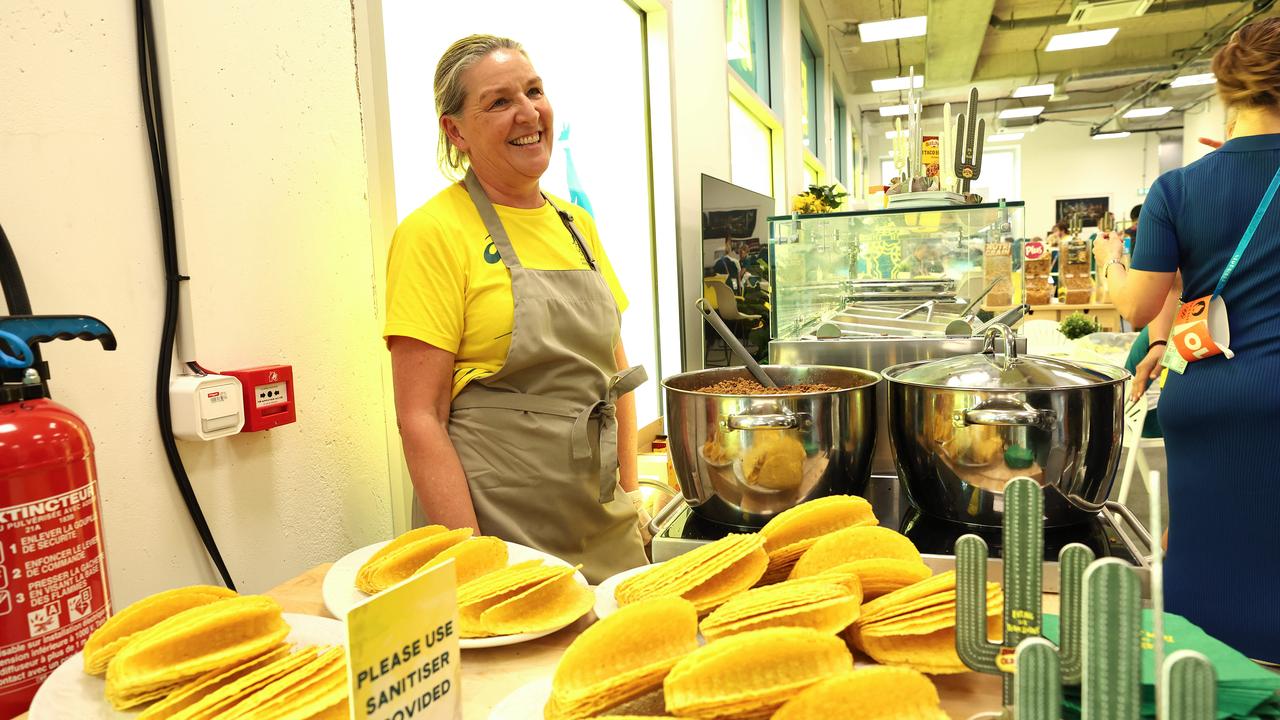
READING LEVEL: GREEN
The smell of coffee hits you when you walk into the Australian section of the Olympic Village.
A coffee cart has been set up alongside tables and chairs.
Throughout the Games, two baristas* will serve up about 20,000 cups of coffee to the Aussie athletes.
Chef de mission* Anna Meares said the coffee cart has been put in the village to build a sense of community – and remind Aussie athletes of home.
“We’re trying to bring those normal elements in for them,” she said.
Media outlet News Corp, which publishes Kids News, paid a visit to the Village on Tuesday.
There was an excited buzz in the air as the country’s best athletes settled in ahead of the Games.

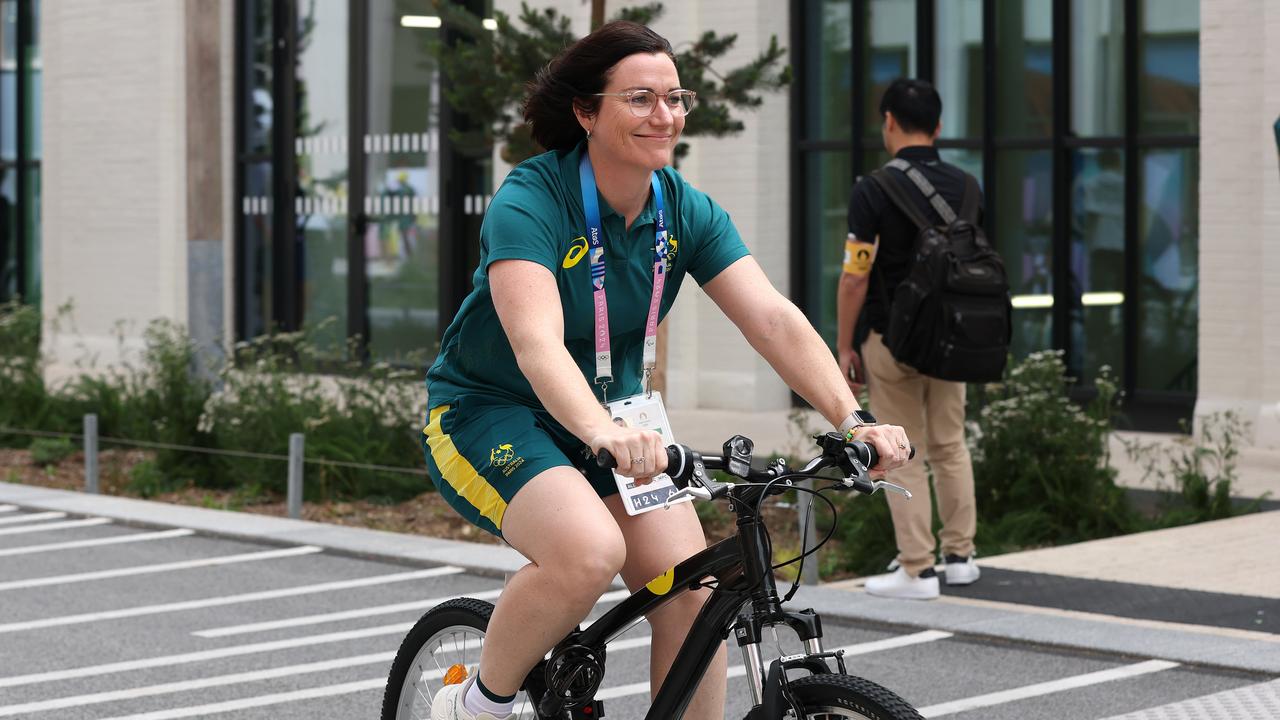
Diver Melissa Wu strolled back in from training as superstar swimmers rubbed shoulders with superstar footballers.
Rugby Sevens star, soon to be NRL Roosters player, Mark ‘Mark Marky’ Nawaqanitawase picked up a village bike and took off for a ride, while the Dolphins swimmers, including Olympic champ Ariarne Titmus, checked in to their new digs.
Images of Uluru and the Great Barrier Reef sport the windows of Team Australia’s lower floors, while banners reading: Australia, Merci Paris (thank you Paris) and Allez Aus (let’s go Australia), decorate the upper balconies.
Meares said much care and thought had been put into the set up, especially the communal spaces* where athletes can come together to hang out. There are two specific spaces to “encourage” the athletes to “gather and mingle”.
“[To] come out of their sporting circles and get to know their fellow Olympian athletes on the Australian team,” Meares said.
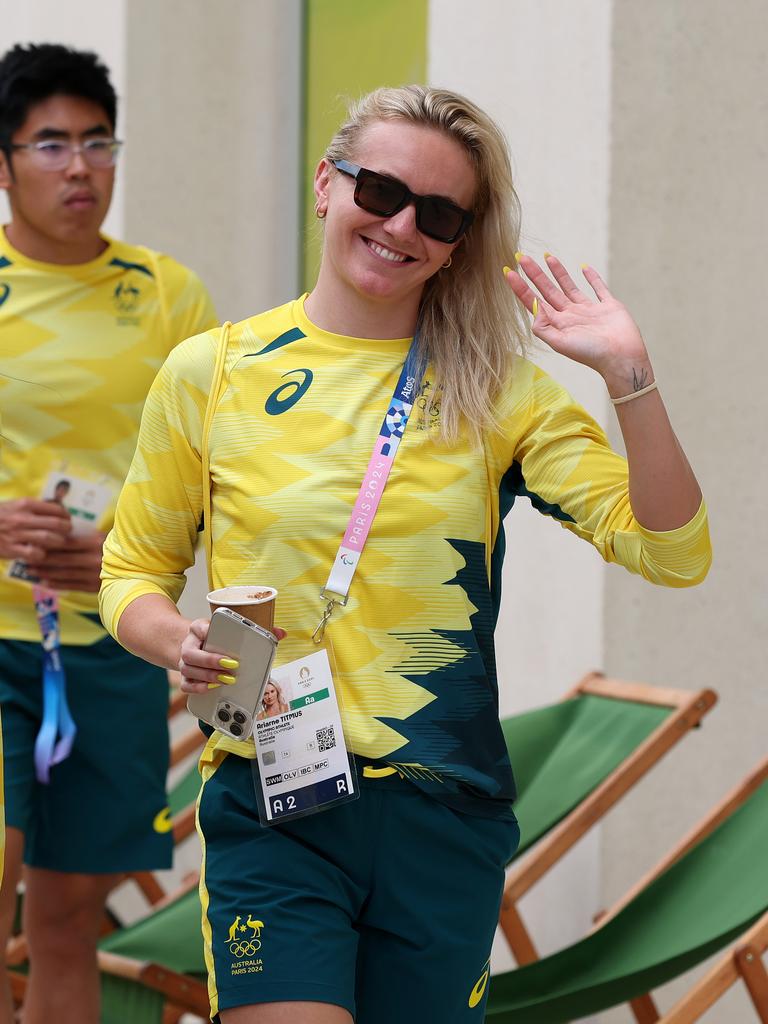
There is a “porch” (which has the coffee cart) with sofas and a television to watch their teammates. The Aussie athletes plan to gather there to watch the Matildas in their opening game.
And then there is the yarning circle* painted onto the ground.
“Our yarning circle space, which is very much inspired by our very rich Indigenous history and culture,” she said.
The swimmers sat around the “yarning circle” where they were given inspiring speeches, as well as information on where to do their laundry.
Olympic swimming medallist Eamon Sullivan, who is an AOC official, warned the athletes not to fill the laundry bag too full – a mistake he made that meant his washing had come back wet.
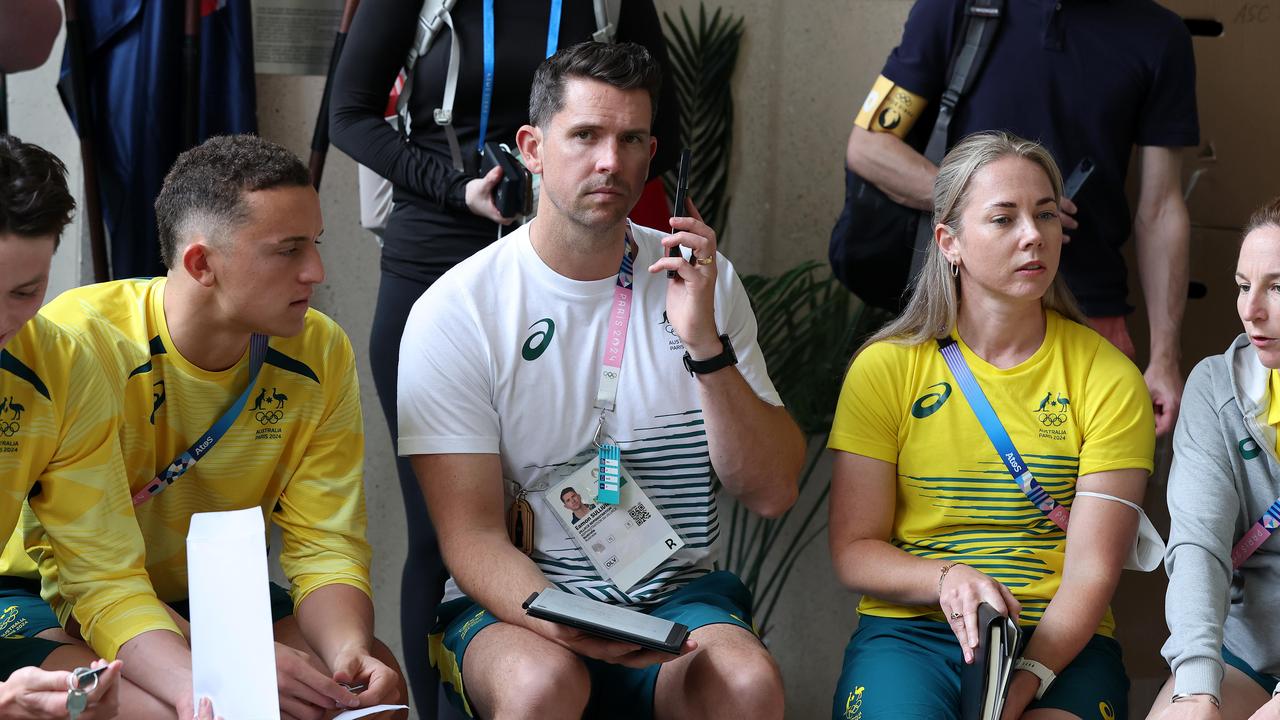
He also told the swimmers to separate their whites and blacks, and to “zip up” the bags.
“Make sure you put the zip all the way through the little bit of elastic at the end otherwise the zip might come undone and your washing is going to get mixed up with everyone else’s undies,” Sullivan said.
He also explained how to use the Village vending machines with a special key ring that gives the athletes free drinks.
Then they were addressed by chef de mission Meares.
“I know that just being a Dolphin carries a lot of expectation and pressure and I hope that here, you feel like a member of this Australian Olympic team,” Meares said.
“This is your space to feel comfortable and safe, and whatever happens out there, know that we’re in your corner.”
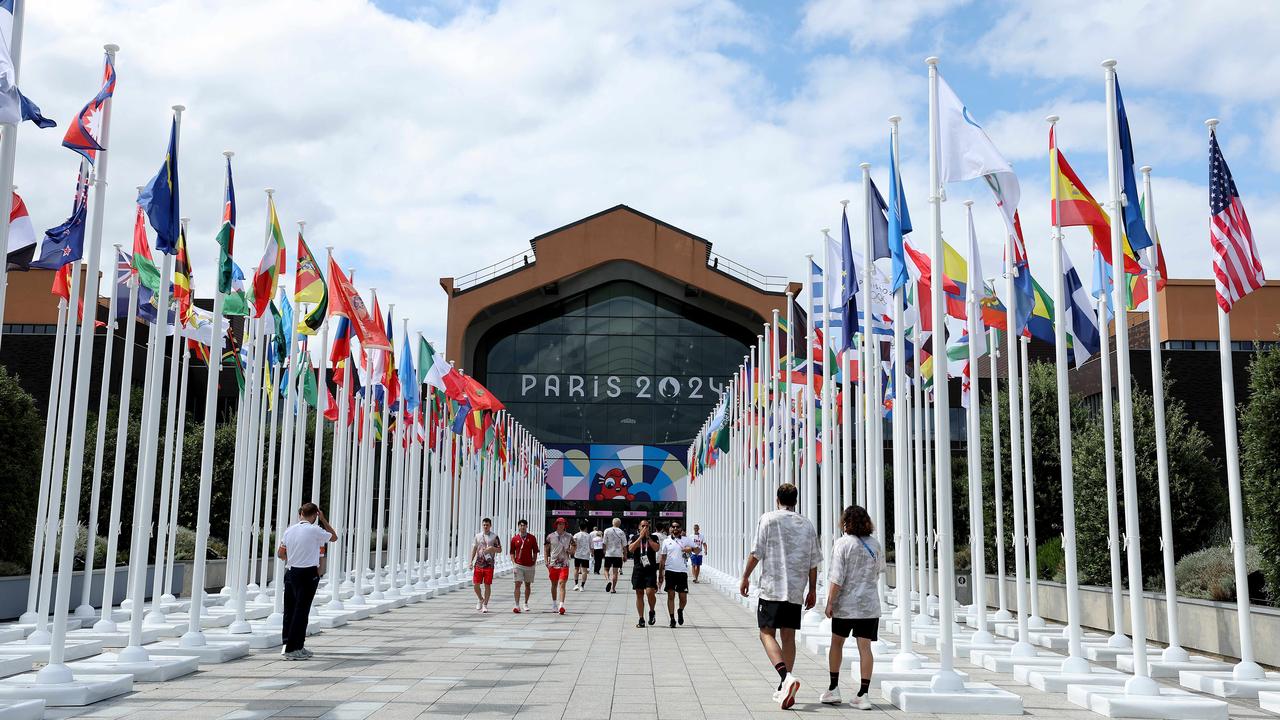
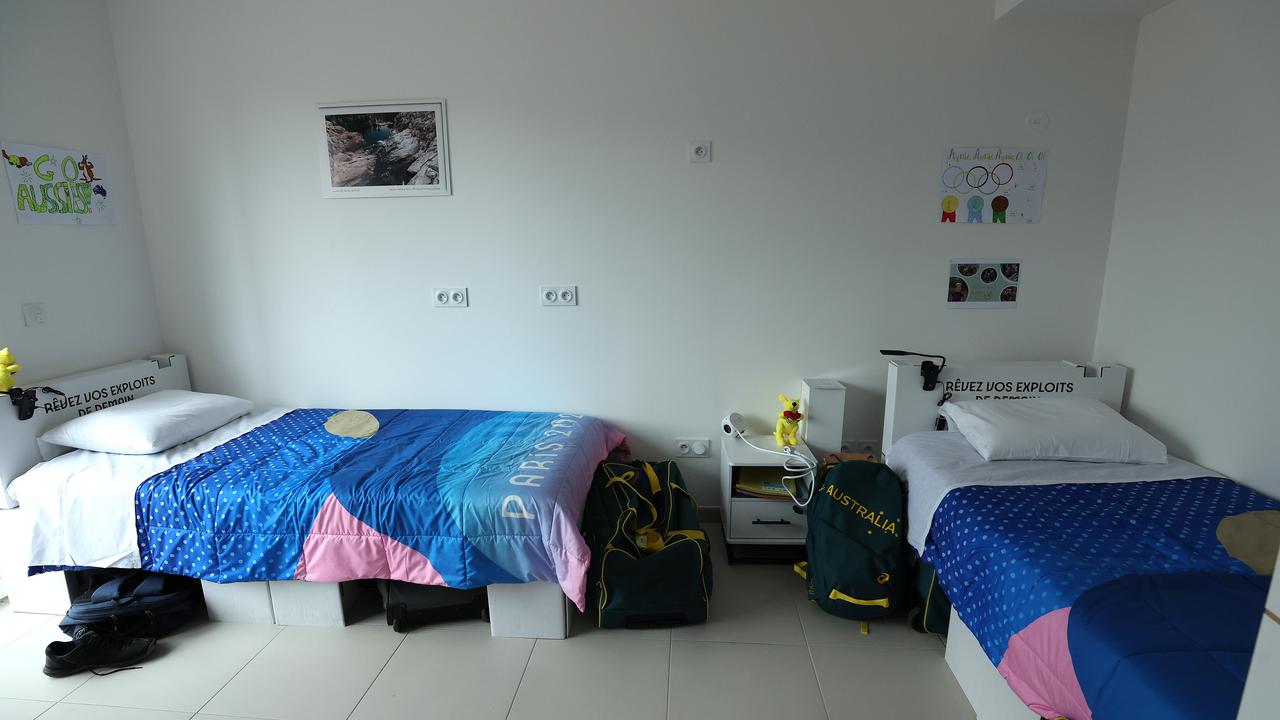
At the Olympic village, athletes from all over the world eat together in a central dining hall but Australia has also set up its own Nutrition HQ, where the team can access quick meals and snacks.
Taco Tuesday was the dish of the day. Poke bowls* are being offered daily, along with overnight oats and Weetbix for those heading out to early training sessions. There is also a gym and recovery spaces, as well as a ping pong set up.
Back in their rooms, the athletes will sleep on cardboard beds, which are firm but said to be very comfortable.
Out on the Village plaza is a gift shop where Paris souvenirs can be purchased, including pins, T-shirts, Olympic Crocs and thongs. Souvenirs aren’t cheap – $106 for a large mascot, $57 for a cap, up to $123 for a T-shirt, $180 for a zip up jacket and up to $164 for a hoodie.
But the main aim for these Australians will be to return with the greatest souvenir of all – an Olympic medal.
POLL
GLOSSARY
- baristas: people who are trained in the art of making coffee
- Chef de mission: the person in charge of a national sporting team at an international event, such as the Olympics
- communal spaces: places where everyone can come together
- yarning circle: an important First Nations custom involving a gathering of people who sit in a circle to share experiences, knowledge and ideas
- Poke bowls: traditionally served in Japan and Hawaii, a bowl of sliced seafood served with veggies and rice and topped with sauce
EXTRA READING
Training fall won’t slow Chloe’s roll
The world’s biggest sporting event
‘Talented freak’ breaks into Games
QUICK QUIZ
1. Who is Australia’s Chef de mission?
2. What does the Aussie section of the Village smell like?
3. What is the yarning circle used for?
4. What are two dishes served at Australia’s Nutrition HQ?
5. What type of beds do the athletes sleep on?
LISTEN TO THIS STORY
CLASSROOM ACTIVITIES
1. Get them together
Create a special ‘getting to know you’ activity or game that would help the athletes meet and get to know other athletes from different sports. Write a clear step by step guide to your activity or game. Give it a great name, too!
Time: allow at least 15 minutes to complete this activity
Curriculum Links: English, Health and Physical Education, Personal and Social Capability
2. Extension
How could a bed made out of cardboard be comfortable and strong enough for Olympic athletes to get the sleep that they need to perform at their best?
Create a design that specifies how the cardboard should be made or constructed. Use your research skills to help you.
Time: allow at least 45 minutes to complete this activity
Curriculum Links: English, Design and Technologies
VCOP ACTIVITY
Read this!
A headline on an article – or a title on your text – should capture the attention of the audience, telling them to read this now. So choosing the perfect words for a headline or title is very important.
Create three new headlines for the events that took place in this article. Remember, what you write and how you write it will set the pace for the whole text, so make sure it matches.
Read out your headlines to a partner and discuss what the article will be about based on the headline you created. Discuss the tone and mood you set in just your few, short words. Does it do the article justice? Will it capture the audience’s attention the way you hoped? Would you want to read more?
Consider how a headline or title is similar to using short, sharp sentences throughout your text. They can be just as important as complex ones. Go through the last text you wrote and highlight any short, sharp sentences that capture the audience.

